The Iranian artist Mehdi Ghadyanloo explores the paradox of darkness and light in a series of works that celebrate the ephemera of childhood
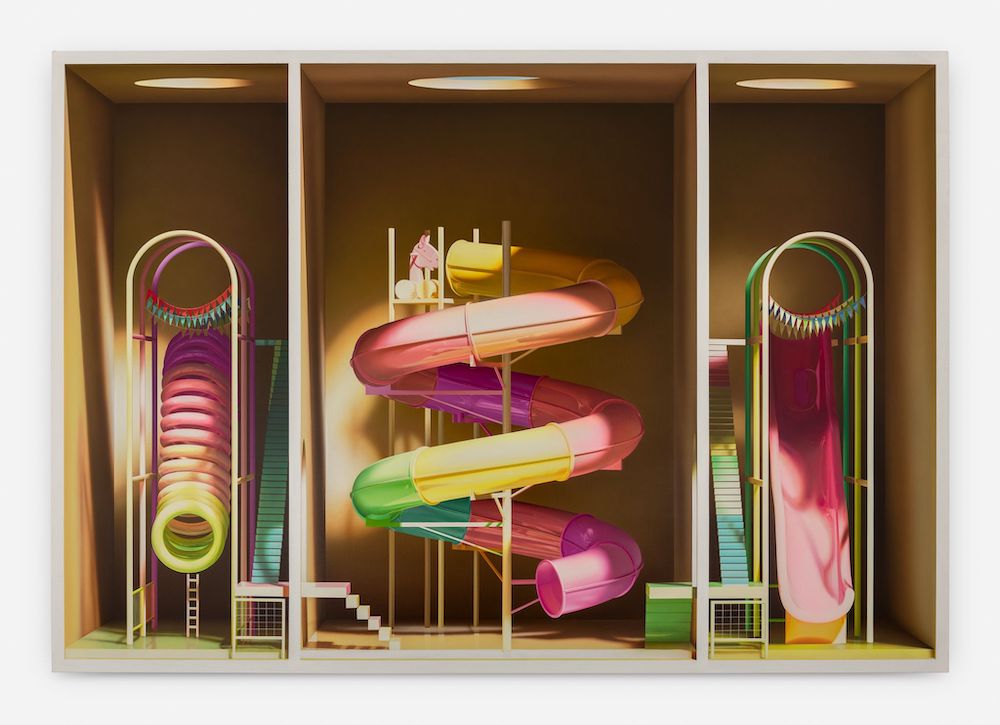
The latest series of works from Iranian-born artist Mehdi Ghadyanloo employs our collective propensity for nostalgia in an uncanny dance of form and light that plays a neat deceptive trick on our perception of space. In his current show at Almine Rech the artist utilises the infamous trompe l’œil technique of his murals in strangely affecting paintings that depict boxes containing hyper-realistic, yet somehow surreal, depictions of industrially manufactured childhood ephemera, such as playground slides, toys and hobbyhorses. The overall effect feels like a heartfelt ode to lost innocence, with the canvases seeming at once both achingly sad and wonderfully entrancing – containing their motifs of collective memory in shadowy seemingly three-dimensional spaces that almost invite you step inside the frame. In doing so, Ghadyanloo brilliantly creates a surreal dance of darkness and light, which for the artist symbolises the eternal flux between the two – a notion that very much takes its philosophical precursors from Sufi mysticism. In fact, in the midst of this dense nostalgia for childhood, and, by proxy, the ever-encroaching spectre of mortality, Ghadyanloo presents us with hope – asking us to recall a simpler sense of being, when an object as plain as a plastic horse could bring unbridled joy. In this exclusive interview with Port the artist discusses why he refuses to lose faith in a world of uncertainty, and explains why he will always be drawn to explore the ways in which beauty can overcome despair.
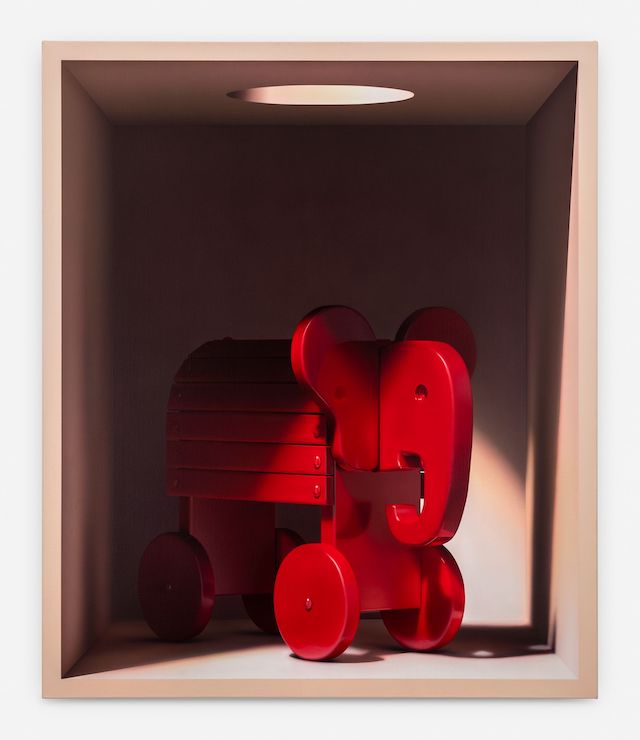
Why have you been drawn to place childhood objects in boxes in your latest series of paintings?
I was always interested in architecture when I was young, so in my painting there is always this idea of conceptual and formal space being explored, and I love how the clean minimal cubes in this work represent a virtual three-dimensional space that doesn’t actually exist, except in your mind. That was the initial thought behind painting the boxes, but then I found that when you put something inside the box, it creates even more layers, and these paradoxical feelings of both light and shadow, and claustrophobia and openness – which, maybe in a more representative way, is reflective of the lives each one of us actually lives. At the same time, for me, the paintings became both joyful and sad – because these objects from childhood really are trapped in the boxes. I mean, some people enjoy the colours, and find these very happy paintings, but, for me, they represent life with all of its up and downs.
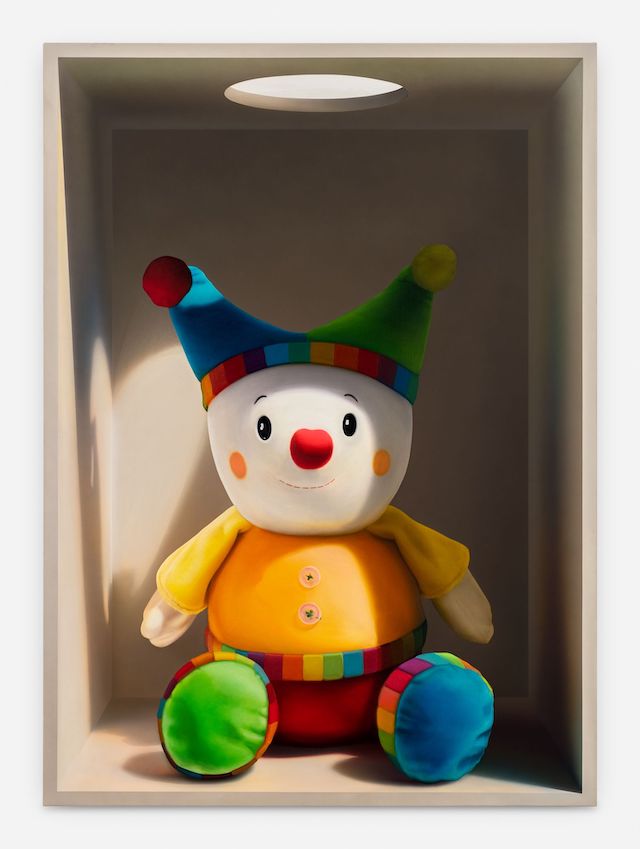
In what sense are they intended to represent the mixed emotions of life?
I like the combination of boxes and toys or slides because they are kind of like existential anxiety questions for me, and I am just trying to reveal that feeling that they have for me. I think these colours, and the way that light goes through the shapes and curves, makes them seem rather beautiful and poetic, but in the end, the mixture of the two also creates an atmosphere that leaves you totally suspended in the middle of the space – particularly with the slides, you don’t know when you look at them if this monument is purely functional or intended for play, so there is a confrontation there. I choose to work in this kind of atmosphere, because I love the poems and writings of Rumi and how he uses light and shadow as a symbolic way to look at both hope and despair. I try to play with these objects and the light in a similarly poetic way.
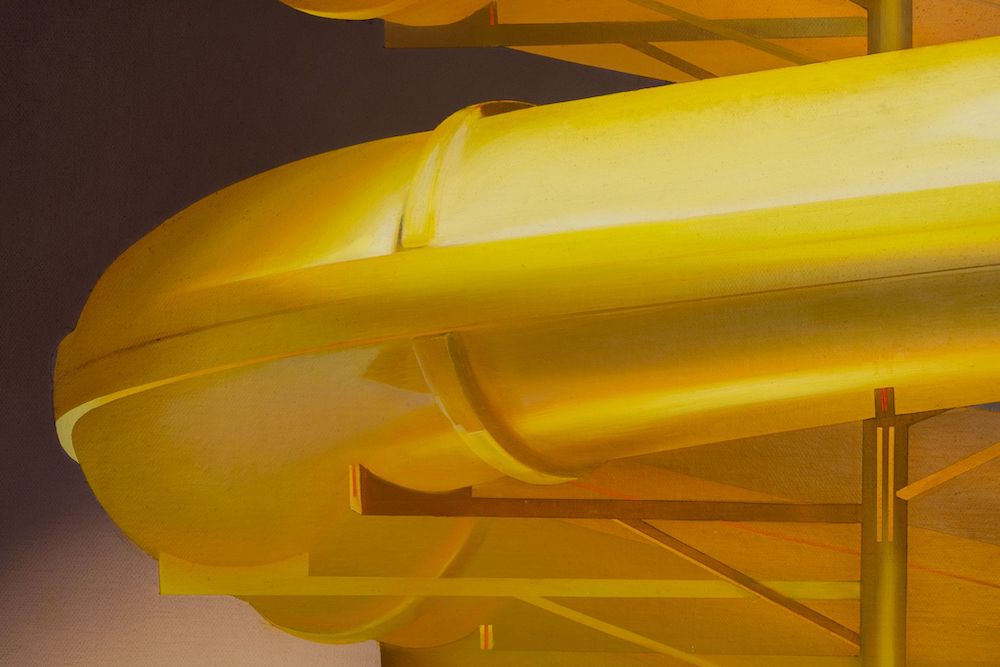
There is certainly a paradox in portraying industrially manufactured objects in a way that is so beautiful…
Yes. The material used to make these kinds of objects is certainly cheap manufactured plastic, and all over the world, there are these cheap playgrounds. But children don’t care at all about the aesthetic and the design at all – they only love the colour and function of these beautiful monsters. Actually, when I was studying these objects, I found that while, yes, plastic is ugly and creates pollution, it also creates incredibly joyful moments – the end almost justifies the means. The biggest challenge for me, as a painter, was to study the beauty inherent in the way that light travels through the plastic, and how it can have this kind of translucent quality – especially in the golden hour, because usually when you go to park with your children in the late afternoon, it’s that golden hour of the day. I love the combination of metal and transparency in plastic too, because it’s also some kind of yin and yang. There is a quality in there that reflects the symmetry in Persian culture, and it’s very interesting for me how, after four or five years of painting these playgrounds, I still have a lot to discover in terms of form and shape with these elements.
The boxed nature feels very sad, because it talks to me of childhood passing, or of the forgotten ephemera of simple joys…
There is a painful kind of nostalgia. I mean, when looking at these objects, you can see that they are made for humans, but you cannot see any figures. This kind of absence for me is sad, but paying attention to the detail of the beauty of the subject, makes the sadness paradox even more complicated. I was at The World Economic forum a few years ago, and listening to different talks about the plastic pollution in the oceans, and, you know, afterwards, I really hated plastic. But, conversely, when I was watching how much kids are enjoying and laughing and screaming from happiness playing on these elements that I have painted here, I found myself thinking that you can make some people truly happy with this material.
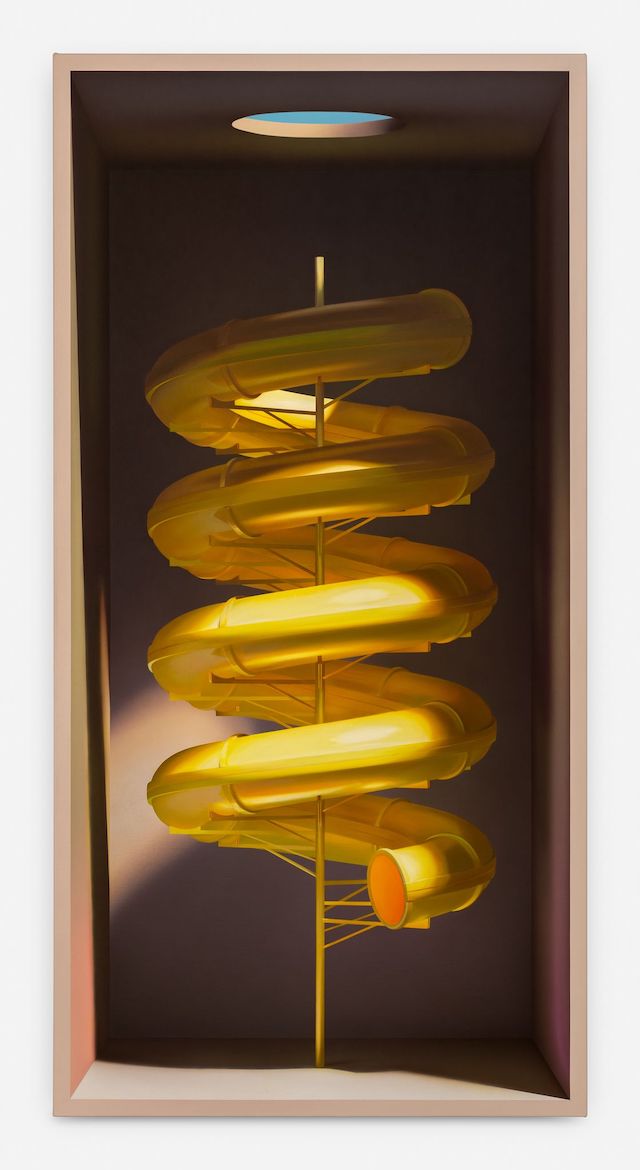
There is a deeper sense of loss apparent to me in them being packaged away for a predominantly digital age…
I can’t help thinking also that with this kind of rapid expansion and invention of new games for kids in the meta-verse that maybe my works will become a reference for playgrounds that will no longer actually exist – maybe in the future we won’t even have these kind of playgrounds. And really, playgrounds are just so important. When I was researching the history of playgrounds after WII, I found some amazing facts – such as the way in which they first made playgrounds in Switzerland and Spain in areas refugees had been sent to. It was a very strange feeling for me, because you knew that these kids had lost everything – their parents and families, but they’re laughing and having fun because in the playground they can even forget these serious things, you know? The playground can be a therapeutic forgiveness mechanism– it can bring short joy when there’s no guarantee for longer joy.
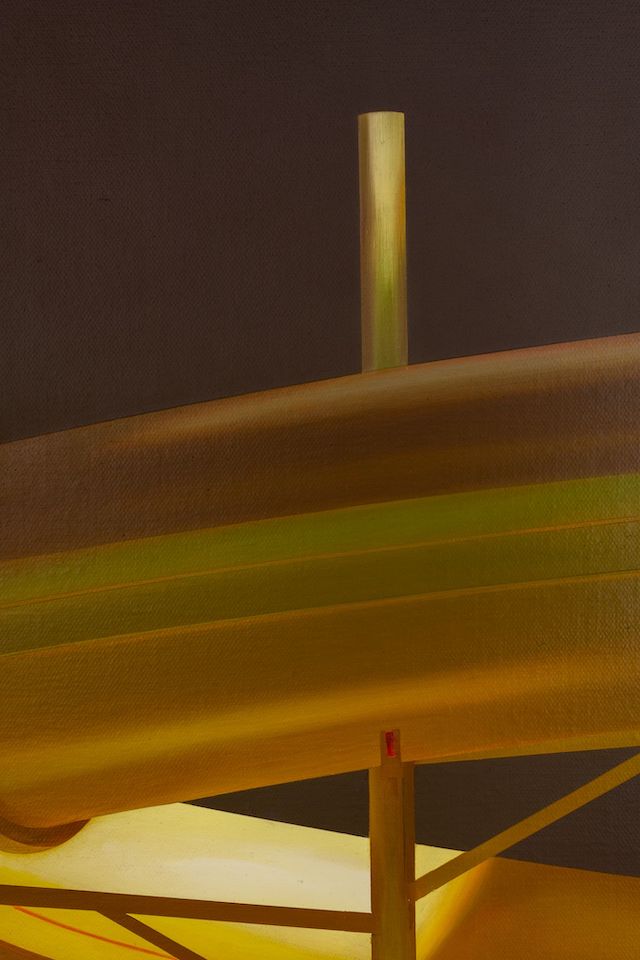
What is your definition of beauty and how does this notion of joy and balance play into it?
In a way, people talk very carefully about beauty now, because they feel that with the problems of the world maybe it’s almost cheap to approach beauty in an artwork. I think beauty has different meanings, but I truly think anything that can disconnect you from the problems of existential anxiety and create joy has beauty. I had this same approach or feeling even when making my murals in Iran almost 20 years ago. I wasn’t originally from Tehran. I came from a rural part of Iran, and when I entered Tehran to register my name in the university, I found it to be a very grey, ugly and boring city. And I wanted to be able to change, at least, the facades of the buildings – the joyful murals were intended as painkillers for the city. I’m continuing this approach in my painting. Whenever life becomes bitter, I became more play playful, to create this sense of balance. I’m one hundred per cent against this idea that if you paint something joyful, it means you are a shallow person, or you don’t feel the real pain in life. My work is a balancing mechanism. I am trying to balance the darkness with joy. I don’t want to add to the bitterness of life. I want to create something to bring hope, even if it’s for a short time, and that drive is sort of fundamental to Sufi philosophy.
Mehdi Ghadyanloo’s show The Untold Stories at Almine Rech runs March 1 – April 6, 2023




